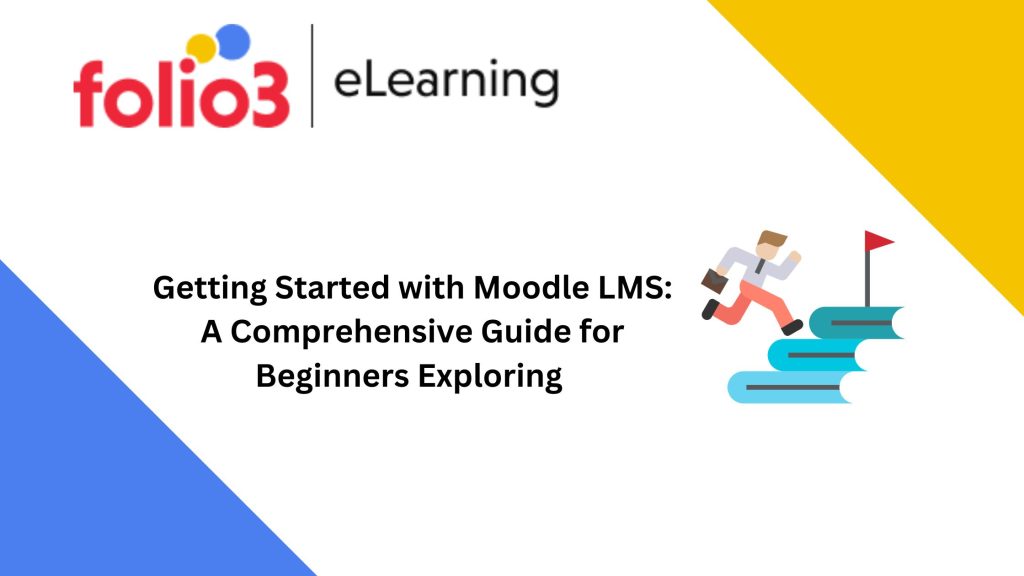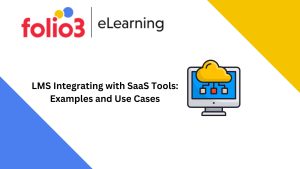
Executive Summary:
With the help of the robust and adaptable Moodle LMS (Learning Management System), educators may efficiently design and deliver online courses. Moodle offers a variety of features and functionality to serve your e-learning requirements, whether you’re a corporate training department or a single instructor.
Introduction:
Online learning has become a crucial component of education and training in today’s fast-changing digital environment. Education professionals are looking for reliable and user-friendly systems to effectively deliver courses as virtual learning environments increasingly supplement traditional classroom settings and even completely replace them in some cases. Moodle LMS (Learning Management System) is one such platform that has seen substantial growth in popularity.
The open-source, comprehensive Moodle LMS provides a versatile and adaptable environment for developing online courses. Martin Dougiamas created Moodle in 2002, becoming a popular option for organizations, schools, and businesses worldwide. With its comprehensive features and simple user interface, instructors may better engage students, encourage teamwork, and monitor progress.

Fundamentals of the Moodle LMS:
Before starting your Moodle adventure, understand the foundational ideas and advantages of the Moodle LMS. Moodle’s basic principles include openness, community-driven development, and the idea that everyone should have access to education. With no restrictions imposed by proprietary software, Moodle gives educators the opportunity to modify and adapt the platform to their unique needs.
Both educators and students can benefit significantly from Moodle. Moodle provides various features and tools for educators to design dynamic and exciting online courses. It allows teachers to create lesson plans, administer tests, monitor student growth, and promote teamwork. Moodle offers students a seamless online learning environment to access course materials, communicate with teachers and classmates, finish tasks, and get prompt feedback.
Moodle Setup:
Setting up your Moodle environment is the first step in getting started with the Moodle LMS. Comprehending the technical requirements and hosting possibilities is essential to ensure a seamless installation process. A local server and a web hosting service are options for hosting Moodle. Following an extensive installation guide, you can set up Moodle, construct databases, and build a reliable online course foundation.
You will be exposed to Moodle’s user-friendly interface once it is operational. You can browse the platform confidently and quickly if you know the various parts, navigational tools, and administrative settings.
Course Design and Administration:
After successfully installing Moodle LMS, you may start building your first course. Moodle offers a wide range of resources and activities to engage students effectively. You have the resources to design engaging and interactive courses, including quizzes, forums, and multimedia content.
Course management in Moodle involves structuring your course, creating learning paths, managing enrollment, and controlling user roles. You may give helpful feedback and track student progress throughout the course using Moodle’s grading and assessment functions.
Increasing the Educational Experience:
A number of features are available in the Moodle LMS to improve learning and encourage student involvement. Instructors can promote interaction, information sharing, and peer-to-peer learning by including discussion forums, messaging services, and collaboration tools. Adding multimedia components like films, audio files, and interactive information is also supported by Moodle, making learning more dynamic and exciting.
Personalization and Customization:
Moodle’s flexibility, which enables customization and personalization of the learning environment, is one of its most significant benefits. In order to develop visually appealing course designs that complement their branding or pedagogical preferences, educators can select and customize themes. Moodle’s wide plugin and add-on library also offer the chance to increase the platform’s capability and adapt it to particular needs. A distinctive and successful learning experience is ensured by customizing the course navigation, layout, and permissions.
Evaluating Learner Performance:
Any learning environment must include assessment, and Moodle provides various assessment methods and possibilities. Teachers can design tests, assignments, and other assessment tasks, establish grading guidelines, and give students insightful feedback. The analytics and reporting tools in Moodle let teachers create in-depth reports, monitor student achievement, and pinpoint areas for development. The learning outcomes are maximized thanks to the personalized support and intervention made possible by these insights.
Communication and Cooperation:
Effective communication and teamwork are essential components of online learning success. Moodle offers a variety of communication options, including messaging services, forums, and real-time chat, to let teachers and students engage. Group projects and activities can promote cooperation, teamwork, and peer learning. The Moodle notification system ensures that students remain informed and interested throughout their educational journey.
Maintaining and Managing Moodle:
Understanding Moodle’s administration features is crucial if you’re going to be a course designer or administrator. This entails maintaining user accounts, making backups, and ensuring your Moodle instance is secure. The functionality and user experience can be further improved by integrating external tools and programs, such as video conferencing or plagiarism detection systems. In order to maintain a powerful and safe learning management system, staying current with Moodle releases, security fixes, and community resources is essential.
Conclusion:
Moodle LMS stands out as a robust and dynamic platform in the constantly changing world of education and training that enables organizations and educators to design efficient and exciting online learning experiences. Moodle’s open-source nature provides a versatile and configurable environment that fits various educational needs and preferences. You now have a path to follow as you start your Moodle journey, from comprehending the core ideas to examining the vast array of features and functionalities.
By adopting the Moodle LMS, educators can create and deliver courses that encourage active learning, collaboration, and individualized instruction. The platform’s user-friendly interface and wide selection of tools make it easy to create interactive exercises, possibilities for evaluation, and multimedia-rich content, which improves students’ learning experiences.

FAQs
Understanding Moodle LMS
Moodle is an open-source LMS that provides a digital platform for creating, delivering, and managing educational courses and content. It offers a range of features for online learning, including course creation, assessment tools, communication, and collaboration.
Moodle is highly customizable, adaptable, and cost-effective. It provides a user-friendly interface, supports various learning activities, and offers a thriving community of educators and developers. Its flexibility suits various educational settings, from schools and universities to corporate training environments.
Moodle can run on various operating systems like Linux, Windows, and macOS. The specific requirements depend on the version of Moodle and your hosting environment. Check the official Moodle documentation for the latest system requirements.
Moodle provides detailed installation instructions for different setups. You can download the Moodle package, follow the step-by-step installation guide, and configure it according to your server requirements. Alternatively, many hosting providers offer one-click installation options for Moodle.
During installation, you will set up the basic site information, such as site name, language, time zone, and administrator account. Additionally, you can configure authentication methods, enrollment options, and default course settings.
In Moodle, you can create courses and organize them into categories. Within each course, you can add various activities and resources, such as assignments, quizzes, forums, files, and multimedia content. Moodle provides a user-friendly interface for managing course sections and arranging content.
Moodle offers various enrollment methods, including manual enrollment, self-enrollment, and enrollment keys. You can define enrollment options at the course level or set up enrollment plugins for more advanced enrollment management. Additionally, you can manage user roles, permissions, and groupings within courses.
Moodle provides a comprehensive set of grading and assessment tools. You can create different types of quizzes, assignments, and interactive activities. Moodle supports manual grading, rubrics, and automated grading methods. It also offers a guidebook for tracking student progress and generating reports.
Moodle offers a wide range of themes that determine the look and feel of your site. You can choose a theme from the available options or create your own custom theme. Moodle’s theme settings allow you to customize colors, fonts, layouts, and other visual aspects.
You can upload your organization’s logo, favicon, and custom CSS styles to add your branding elements to reflect your visual identity. Moodle also allows you to customize the site’s front page and add custom blocks or menus.
Moodle provides options to configure site navigation menus, blocks, and course formats. You can define custom navigation items, rearrange blocks, and choose the default course format that suits your requirements. User permissions can be managed at the site level and within individual courses.
Moodle offers a wide range of activity modules and resource types. You can create interactive lessons, discussion forums, wikis for collaborative content creation, glossaries, surveys, and much more. These activities and resources can be used to engage learners and foster active participation.
Moodle’s discussion forums provide a platform for learners to interact, share ideas, and engage in discussions. You can create forum topics, set participation rules, and moderate discussions. Similarly, Moodle’s wiki module enables collaborative content creation, allowing learners to build knowledge collaboratively.
Moodle supports the integration of multimedia elements, such as videos, audio files, images, and interactive content. You can embed multimedia resources directly into course pages or use dedicated media playback and interaction modules.









